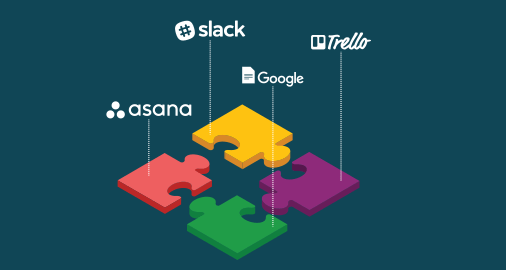Scaling Agile: Managing Sprints Across Distributed and Large Teams
8 min read

Agile methodologies have become a go-to approach for software development. Agile emphasizes flexibility, collaboration, and iterative progress, which is essential for navigating complex projects. But as companies grow and teams become more distributed, scaling Agile can become a challenging task. When you have multiple teams working from different locations, how do you keep the Agile principles intact and ensure smooth coordination across sprints?
Let’s dive into the key strategies for scaling Agile, specifically in the context of managing sprints across large and distributed teams.
Also read: What is Agile Methodology?

If you’re looking to enhance your Agile workflows, consider integrating the Middleware Jira Plugin into your process. This powerful plugin streamlines communication, automates tasks, and improves the overall efficiency of your sprints—whether you're managing a few teams or scaling across an entire organization.
Key Strategies for Scaling Agile
1. Understanding the Challenges of Distributed Agile Teams

Before we get into solutions, it's important to understand the unique challenges that come with managing distributed Agile teams. Here are a few:
Communication Barriers: When teams are spread across different geographies and time zones, real-time communication becomes tricky. Misunderstandings can easily happen, and the lack of face-to-face interactions may lead to slower decision-making.
Cultural Differences: Distributed teams often come from diverse cultural backgrounds. While this can be an advantage, it can also lead to misalignment in expectations, work styles, and communication methods.
Consistency in Processes: With teams in different locations, maintaining consistency in Agile processes across sprints can be difficult. Without a unified approach, teams may work in silos, leading to inefficiencies and a lack of synergy.
Time Zone Constraints: Working across multiple time zones makes synchronous collaboration a challenge. Meetings and discussions that involve every team member may not always be feasible due to conflicting working hours.
2. The Importance of a Strong Agile Framework
To successfully scale Agile, you need a strong framework that is adaptable to different team sizes, structures, and geographies. Two of the most popular frameworks for scaling Agile are:
SAFe (Scaled Agile Framework)

SAFe is designed to help larger organizations implement Agile across multiple teams. It integrates principles from Agile, lean, and product development flow, and offers a structured way to align all teams towards a common goal. SAFe emphasizes roles like Release Train Engineers, Product Owners, and System Architects, all working together in a coordinated effort to achieve shared business objectives. Read more about Scaled Agile Framework (SAFe) for Technical Project Managers (TPMs)
LeSS (Large Scale Scrum)

LeSS is a simple yet powerful framework that extends Scrum principles to large-scale operations. It allows multiple Scrum teams to work on a single product while keeping the process straightforward and scalable. The focus is on maintaining transparency, simplicity, and continuous improvement across teams.
Both frameworks are useful, but your choice will depend on the scale of your organization and the complexity of the projects you’re handling.
3. Key Strategies for Managing Distributed Teams Across Sprints
Here are some practical tips to ensure that your Agile processes run smoothly, even with distributed and large teams.
A Unified Vision and Clear Communication

When managing large teams spread across different locations, communication is the backbone of any successful sprint. Regular communication fosters collaboration, and having clear goals ensures that everyone knows what’s expected.
- Daily Standups
While time zones might make it difficult for everyone to meet at the same time, ensure that all teams have their own daily standups. Alternatively, staggered standups across time zones with asynchronous updates can work too. Tools like Slack, Microsoft Teams, and Zoom are great for this.
- Video Conferencing
For distributed teams, video is far more effective than just voice. It brings a sense of connection that emails or chats just can’t provide. Tools like Zoom, Google Meet, or Skype help bridge the gap for team members working remotely.
- Asynchronous Communication
Not every discussion needs to happen in real-time. Use tools like Jira, Confluence, and Trello to track progress, share documentation, and ensure that everyone can participate in sprint planning or review sessions regardless of time zone.
Standardize Processes, But Keep It Flexible
Agile is all about adapting to change, but for large, distributed teams, you need a bit more structure to maintain consistency.
- Sprint Planning

Planning is critical, especially when coordinating across teams. Make sure that all teams are aligned on sprint goals, stories, and priorities. Having a central platform like Jira to track user stories, tasks, and progress can help make sure everyone stays on the same page.
- Retrospectives and Reviews

At the end of each sprint, host a review session where each team can showcase what they’ve worked on. Make retrospectives a priority to discuss what went well and where improvements can be made. This is an opportunity for teams to address challenges specific to working remotely.
- Cross-Team Collaboration

Often, large teams in different locations need to collaborate to achieve a larger goal. Set up cross-team coordination meetings where representatives from each team can sync up on progress, dependencies, and issues.
Use the Right Tools for Collaboration

Effective tools are crucial when scaling Agile. For distributed teams, the right tools can make all the difference in maintaining a seamless workflow across sprints. Here’s a breakdown of some essential tools:
Project Management Tools: Tools like Jira, Asana, and Trello are indispensable for tracking sprint progress, managing backlogs, and organizing tasks.
Version Control: Git and GitHub are industry-standard for managing code, but for larger teams, tools like Bitbucket or GitLab can help with versioning and code collaboration.
Continuous Integration/Continuous Deployment (CI/CD): Tools like Jenkins, Travis CI, and CircleCI help teams automate testing and deployment, ensuring that code is continuously integrated into a shared repository and ready for delivery.
Communication Tools: Slack, Microsoft Teams, and Zoom provide real-time communication and file-sharing capabilities, crucial for staying in sync with your teams across time zones.
Build a Strong Agile Culture

Culture plays a huge role in the success of Agile at scale. It’s essential to cultivate a culture of trust, transparency, and continuous learning across teams. This helps distributed teams feel more cohesive and aligned despite being in different locations.
Trust Your Teams: In Agile, teams are self-organizing. Trust your teams to make decisions and keep each other accountable for their work. Micromanagement only slows down progress and dampens creativity.
Foster Collaboration: Encourage team-building activities and open communication. Virtual happy hours, online team-building exercises, and regular informal chats can go a long way in creating bonds between remote team members.
Continuous Improvement: Agile thrives on feedback. Ensure that feedback loops are built into every sprint cycle, whether through retrospectives or direct one-on-ones.
Focus on the Product, Not Just the Process

While Agile processes are important, it’s easy to get lost in the mechanics of managing sprints. Don’t forget that the end goal is delivering a valuable product. Keep the focus on customer needs, and ensure that all teams are aligned around delivering high-quality outcomes.
In large, distributed teams, it can be tempting to get bogged down in process details. But it’s essential to keep asking, “How does this sprint contribute to the product and user value?” This mindset helps keep the teams grounded and motivated, even when managing sprints gets complex.
4. Scaling Agile with the Right Leadership

Effective leadership is a cornerstone of scaling Agile successfully. As your teams grow, you need leaders who can foster collaboration, support teams through challenges, and promote the Agile mindset.
Agile Coaches: Agile coaches are invaluable in guiding teams through the complexities of scaling. They can mentor teams, help resolve conflicts, and drive Agile practices to a higher level.
Product Owners and Scrum Masters: As the size of your team increases, the importance of having clear roles for Product Owners and Scrum Masters becomes even more critical. They ensure that the backlog is well-managed, priorities are set correctly, and teams have the support they need.
Also read: A Practical Productivity Guide for Engineering Managers of Distributed Software Engineering Teams
Conclusion
Scaling Agile across distributed and large teams isn’t easy, but with the right approach, tools, and mindset, it can be done effectively. The key lies in fostering a culture of collaboration, investing in the right technology, and maintaining a consistent Agile framework that adapts to your organization’s needs. By focusing on clear communication, standardized processes, and continuous improvement, you can ensure that your Agile teams remain aligned and productive, no matter where they’re located.
If you’re looking to enhance your Agile workflows, consider integrating the Middleware Jira Plugin into your process. This powerful plugin streamlines communication, automates tasks, and improves the overall efficiency of your sprints—whether you're managing a few teams or scaling across an entire organization. With Middleware, you can bridge gaps between teams, enhance cross-functional collaboration, and keep everything in sync, all within Jira’s familiar interface.
FAQs
What is the main issue when Agile is scaling to large systems?
The main issue is maintaining communication, coordination, and consistency across multiple teams, leading to challenges in aligning objectives, managing dependencies, and ensuring quality at scale.
What is the approach to scaling Scrum across multiple teams?
Scaling Scrum across multiple teams is typically done using frameworks like SAFe, LeSS, or Nexus, which provide structures for coordination, shared roles, and managing cross-team dependencies.
How do you manage distributed teams in Agile?
Managing distributed teams in Agile requires clear communication tools, regular virtual meetings, time zone consideration, and ensuring strong collaboration across locations using technology for seamless interactions.


